Heritage Llangwm
The Talking Tapestry of Langum
St Jerome’s Church, The Green, Llangwm, Haverfordwest, SA62 4HX
Open from 9:00am to 5:00pm, Easter to September - Admission free
The Talking Tapestry of Langum tells the story of the village of Llangwm in Pembrokeshire and the arrival of Flemish invaders and settlers in the 12th century. The tapestry was a major achievement of the Heritage Llangwm project which also paid for much-needed building work at St Jerome’s church, Llangwm, where the tapestry is now displayed.
So why ‘Langum’?
We haven’t forgotten how to spell. The village has had many names throughout its long history. ‘Langum’ was one of them.
The Talking Tapestry was designed by Llangwm artist and illustrator Fran Evans, based on illustrations by children from Cleddau Reach and Hook schools. Fran’s images were transferred to six pieces of calico and mounted on specially crafted wooden frames.
Over the summer and autumn of 2016 the individual pieces were lovingly stitched by local people, many of them inexperienced stitchers. (It’s rumoured that the stitching parties were also an excuse for a cup of tea and a natter!). When the tapestries were finished they were sewn together to make a five metre-long panel.
The project was overseen by our tapestry supremo, the Rev. Andrew Johnson – who is not only a local vicar but happens to be a Master Weaver and Embroiderer.
Andrew’s comment: “I was daunted by the scale of the project and the fact that most of those taking part had no experience of this sort of embroidery. Now, as I review what has been achieved, I am thrilled and pleased that they’ve produced such a remarkable piece of skilled work full of vitality and quirkiness.”
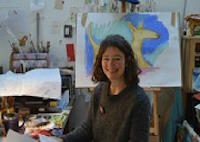

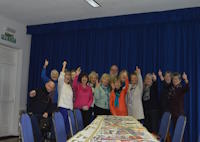
The Story
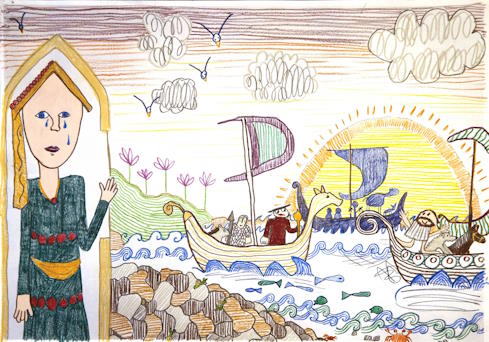
1
The tapestry begins in 1066 when we see Queen Mathilde, William the Conqueror’s Flemish wife,
waving her ambitious husband goodbye as he sets out across the Channel.

2
The Normans, having eventually extended their power into Wales, were joined by Flemings sent by Henry I to subdue the native Welsh.
Godbert the Fleming, born in 1096 in Pembroke is seen as Llangwm’s founder. His family later took the name de la Roche.

3
In 1185, St Jerome’s church was built. The effigies inside commemorate Godbert’s descendant Robert de la Roche and Robert’s grandmother Margaret.
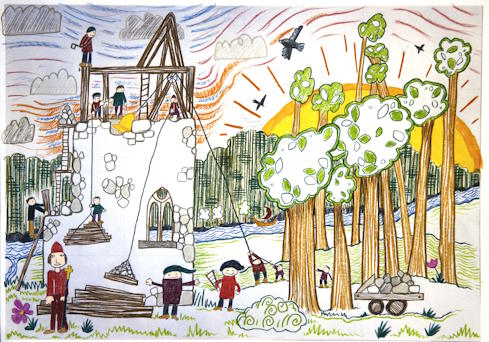
4
The Flemings also needed somewhere comfortable to live, so they built themselves a manor house near Llangwm.
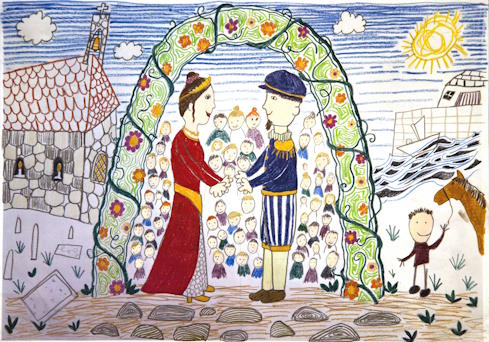
5
In 1315, Sir David Roche, a descendant of Godbert, married Lady Johanna, from another branch of the family, in St Jerome’s.

6
In 1382 the last de la Roche heiress, Margaret, died soon after marrying Sir Roger de Clarendon.
He was implicated in a plot against the king and was hanged in 1402.
The Film
